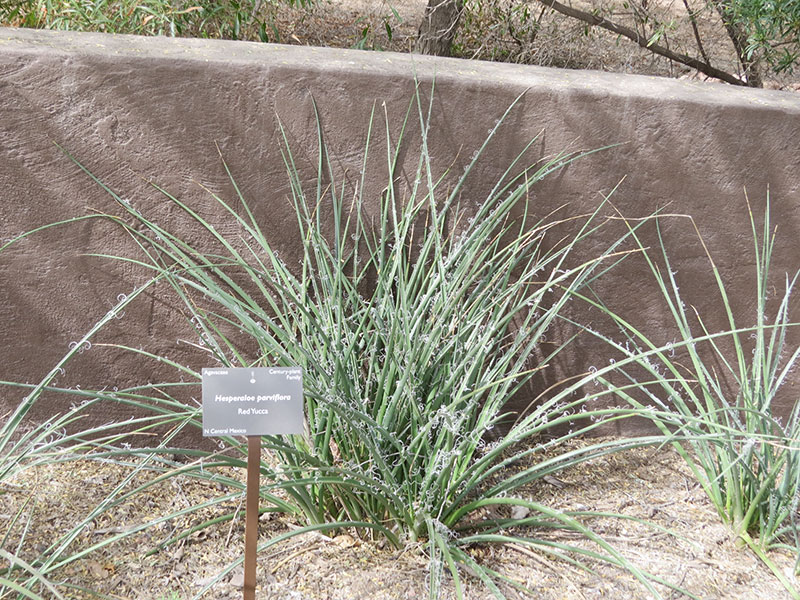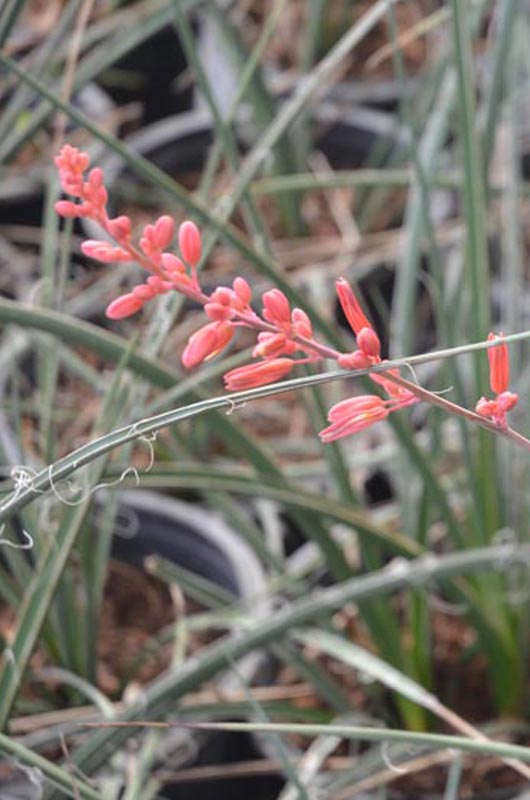| General Description | An attractive landscape plant featuring coral red flowers during the summer months and clumps of thick green foliage. |
| ID Characteristic | Hesperaloe parviflora can be identified by its foliage which is similar to that of Yucca except that the leaf apices lack a spine Its coral red flowers that resemble lilies are quite distinct |
| Shape | Grows in clumps or mounds of succulent grass-like, stemless plants.
|
| Landscape | Can be used as an accent plant, in xeriscaping or to attract hummingbirds. It is extremely drought tolerant and is used in many southwestern gardens. |
| Propagation | Sow untreated seeds in flats by moistening the media and gently pressing the seeds into it. Keep the flats in a cold frame until the following spring. Once the seeds have sprouted wait 6 months before moving them to full sun light. |
| Cultivation | Minimal maintenance is required such as removing the spent flower stems. It requires full sun and supplemental irrigation in arid environments for best flowering; however, overall it needs minimal water as it is very drought tolerant. It prefers a soil pH of 6.8-7.2. |
| Pests | Aphids can be problematic during bloom. |
| Notable Specimens | Denver Botanic Gardens, Denver, Colorado, United States of America. |
| Habitat | Growth restricted to Mexico and the lower Rio Grande Valley and Texas. Found on prairies; rocky slopes; mesquite groves on well drained sand, loam, caliche, or limestone. |
| Bark/Stem Description | The plant is stemless. |
| Leaf Description | The simple, glaborous leaves have parallel venation, ciliate margins, acuminate apex and a truncate base. Foliage can be described as thick green rounded threadlike clumps or blades of about 60 – 90 cm. Leaves produce a curly white filament along its margins similar in character to Yucca, but lack the spike at apex found on Yucca's. |
| Flower Description | The bisexual, coral red, bell shaped flowers are produced in early-mid summer with the flower spike resembling tall wands: flowers are about 35 mm in size.
To encourage flowering, full sun and supplemental irrigation is recommended. |
| Fruit Description | The black seeds about 3 cm in length can be found in multi-chambered capsules about the size of a ping pong ball held aloft on 1 m stems originating from the centre of the plant. |
| Colour Description | Foliage is dark green, while flowers are coral red. However in the winter the foliage takes on a plum coloured hue. |
| Texture Description | Foliage texture is similar to leather and fibrous along the edges. |

